Congenital Central Hypoventilation Syndrome: Adelaine’s Story
Patient Story Highlights
- Adelaine was born with two rare conditions.
- A neurologic condition affected her breathing and was difficult to diagnose.
- Adelaine’s case required teamwork among several medical specialists.
- After four months in the Johns Hopkins All Children’s neonatal intensive care unit, Adelaine is home now with ongoing breathing assistance as needed.

Adelaine leads a simple life. She enjoys breakfast, playing in her jumper and dancing. “She’s like a normal baby,” says her mom, Alexis.
But little about Adelaine’s life has been simple. Her early days presented a mystery where her family and the medical team pieced together clues to identify the rare conditions she has. Adelaine’s care ultimately required extraordinary collaboration among specialists from multiple medical centers.
“It's all about how do we best support these patients,” says Mara DiBartolomeo, a neonatologist on the case. “How can we come together for them? It's a really special thing, the medical community coming together as we approach these patients with complex medical conditions and really bring together each other's expertise.”
An Uncertain Beginning
Alexis had non-invasive prenatal testing early in her pregnancy that indicated her baby might have Down syndrome. Alexis describes her high-risk pregnancy as “scary” and was closely monitored by doctors.
When Adelaine was born in April 2024 at a Pasco County hospital, everything initially seemed fine. But soon Adelaine’s breathing challenges began. That first night, her breathing was difficult. When she vomited bile, the medical team chose to transfer her by helicopter to Johns Hopkins All Children’s Hospital in St. Petersburg, Florida, for specialized care. Johns Hopkins All Children’s has a Level IV neonatal intensive care unit (NICU), which is the highest rating available and signifies the most advanced care.
“Initially, she appeared to primarily have gastrointestinal issues upon transfer,” DiBartolomeo says, “but Adelaine had much more in store for all of us.”
First Rare Condition
Adelaine’s medical team focused on her gastrointestinal issues as they diagnosed a rare form of Hirschsprung’s disease called total colonic aganglionosis, a form of intestinal disease in which the entire colon and rectum does not properly develop in the womb. Aganglionosis of large bowel means there are certain nerve cells missing from the muscle layers of the large intestine, which makes it unable to function normally leading to severe blockage and constipation and prevents stool and gas from passing. It affects 8% of infants with Hirschsprung’s.
At 2 weeks old, Adelaine had a significant part of her bowel removed and a surgical procedure called an ileostomy to create an opening (stoma) in the abdominal wall to allow waste to bypass the colon and rectum and pass from the small intestine to an external bag.
The Care Under Intestinal Rehabilitation Excellence (CUIRE) team at Johns Hopkins All Children’s managed Adelaine’s care after the procedure.
“There were several challenges while managing her ostomy and trying to grow and feed normally,” says Fauzia Shakeel, a neonatologist and chief of the CUIRE program. “Some of the common factors to consider when patients have an ileostomy are to maintain their fluid/electrolyte balance and prevent dehydration because the colon, which absorbs fluids, is no longer functional. There were several intestinal rehab strategies used to assist with her feeding in order to discontinue IV nutrition and help her thrive on full feeds absorbed through her small intestines.”
Adelaine is followed in our multidisciplinary intestinal rehab clinic for her long-term needs and to ensure the best possible outcome.
A Mystery
Even after surgery, Adelaine’s breathing challenges continued. After the most likely answers were ruled out, the neonatology team consulted with pulmonology.
“We were involved because Adelaine was experiencing intermittent sleep apneia spells in which she stopped breathing — especially during sleep — requiring a special form of respiratory support called high-flow nasal cannula,” says Nicholas Jabre, a pediatric pulmonologist at Johns Hopkins All Children’s. “A comprehensive workup at that time — including a bedside endoscopy of her airway, echocardiogram, seizure evaluation, MRI and infectious workup — didn’t reveal the issue, prompting further investigation into central apnea—a condition in which the respiratory centers in the brain do not send signals to the muscles that control breathing.” This was confirmed when Adelaine underwent a sleep study, a test in which her oxygen levels, carbon dioxide levels, and breathing patterns were carefully measured overnight. The results of the test showed that Adelaine could not breathe well on her own and likely needed help from a ventilator to help her maintain normal oxygen and carbon dioxide levels.
Slowly, the medical team and Adelaine’s family pieced together a diagnosis of congenital central hypoventilation syndrome (CCHS), a rare neurological condition that affects breathing, and can require lifelong assistance from a breathing machine. It is often associated with Hirschsprung’s and children with pupils that don’t match.
“When I read about it, my heart dropped,” Alexis says. “I knew that’s what she had.”
Genetic testing confirmed the diagnosis.
A Team Approach
Only about 1,000 cases of CCHS have been identified worldwide, and Johns Hopkins All Children’s manages only one or two a year.
When pediatric subspecialists encounter conditions that are so rare, they often consult colleagues at other institutions who may have encountered similar cases. DiBartolomeo completed her residency and fellowship training in Chicago, with close colleagues at Lurie Children’s Hospital. Lurie has a specialized program for conditions that affect the autonomic nervous system, including CCHS, through their Center for Autonomic Medicine in Pediatrics (CAMP). A large multidisciplinary meeting then evolved, allowing collaboration with the team at Johns Hopkins All Children’s, Lurie Children’s and the family to best care for Adelaine and counsel her family.
“We were able to work with their team to help streamline her care here, and help the family really understand such a complex condition so that they could continue to be her biggest advocates,” DiBartolomeo says. “It’s so important in cases like Adelaine’s to be open to working with and learning from the leading experts, especially when it comes to extremely rare conditions. The teamwork required in Adelaine’s case has helped us learn and grow as an institution, and we are very thankful for the opportunity to care for her and her wonderful family.”
Adelaine will make additional visits to Chicago, but her primary follow-up care is through Johns Hopkins All Children’s.
Tracheostomy Considerations
The main treatment option that was offered for Adelaine’s condition was a tracheostomy and long-term ventilation support. A tracheostomy is a surgically created hole in the windpipe to allow air to fill the lungs without using the nose and mouth. It provides a stable way to use a mechanical ventilator that breathes for the child. The procedure is fairly common and is used with a variety of conditions, but it can require great care on the part of the family to avoid infection or the “trach” tube becoming displaced.
Jabre, the pulmonologist, emphasizes that even though tracheostomy and home ventilation are the recommend treatment for CCHS, it’s always important to have thoughtful discussions with the family around such topics.
“These conversations should include careful shared decision-making, recognizing the profound impact of tracheostomy on family dynamics, home life, and emotional well-being,” Jabre says. “There are many complex considerations that must be addressed when deciding on this option. Collaboration helps families feel informed and supported as they navigate this life-altering choice.”
Home
Adelaine went home after four months in the NICU. Although there is no cure for CCHS,
her care focuses on optimizing ventilator settings, promoting developmental milestones, and gradually reducing daytime use of the ventilator as tolerated. She mostly only needs ventilation when she sleeps. Her family has learned to monitor her ventilation levels and handle emergency situations.
“The teamwork among the NICU, surgery, pulmonology and others was amazing,” Alexis says. “It’s fantastic how they collaborate with all the experts.”
Adelaine's Care Team
-
Mara Emily DiBartolomeo, DO
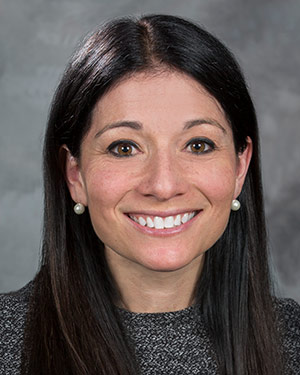
Expertise: Neonatology
Primary Location: Johns Hopkins All Children's Hospital, Saint Petersburg, FL
-
Raquel Gonzalez, MD
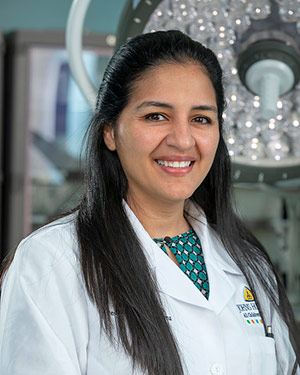
Expertise: Surgical Critical Care, Pediatric General Surgery
Primary Location: Johns Hopkins All Children's Outpatient Care, St. Petersburg, Saint Petersburg, FL
-
Nicholas Anthony Jabre, MD MS
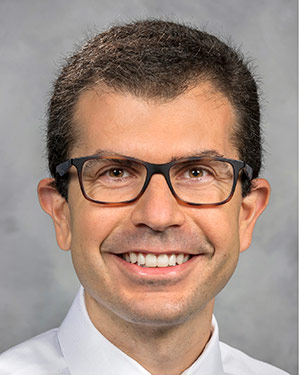
Expertise: Pediatric Pulmonology
Primary Location: Johns Hopkins All Children's Outpatient Care, St. Petersburg, Saint Petersburg, FL
-
Kimberly Law-Sigety, MD
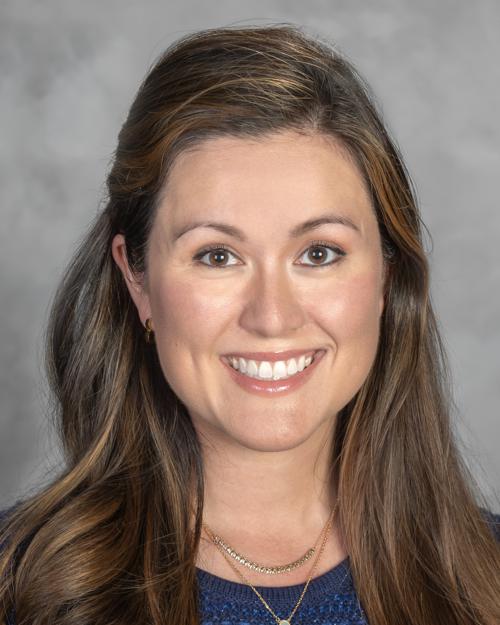
Expertise: Pediatric Gastroenterology
Primary Location: Johns Hopkins All Children's Outpatient Care, St. Petersburg, Saint Petersburg, FL
-
Fauzia Munir Shakeel, MD
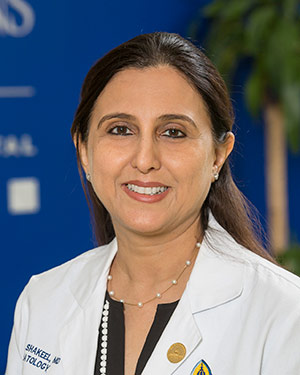
Expertise: Neonatology
Primary Location: Johns Hopkins All Children's Hospital, Saint Petersburg, FL




